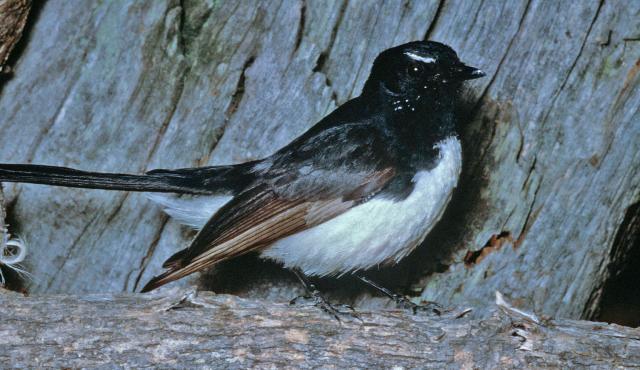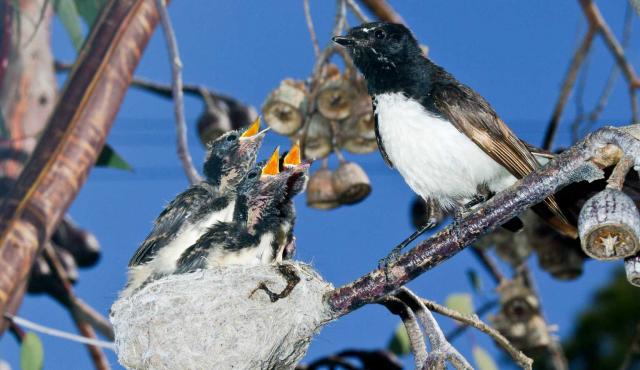A range of teacher professional learning programs will be developed to accompany the Biodiversity of the Western Volcanic Plains online outreach...


Willie Wagtail
Rhipidura leucophrys
If conditions are favorable will breed throughout the year, but generally between August and December. The nest is a small cup of grass bound with spider's web placed on a horizontal branch 1-15 m high. Clutch size is between 2 and 4 and when seasons are favorable up to 4 clutches are raised. Eggs are incubated for 14-15 days by both parents. Young stay until the next clutch hatches and are then driven away. The nest is defended aggressively.
| Details | Description |
| Type | Bird |
| Group | Fantail |
| Identifying Characteristics | |
| Distinctive Markings | Black throat, white eyebrows and whisker marks. |
| Diet | Carnivore. Insects from the ground and the air. |
| Habitat | Prefers open country and farms. Avoids dense forest. |
| Native Status | Native to Australia |
| Sounds | Attack or defence is a harsh, loud, metallic ratchetting chatter. Sings in a pleasant musical chatter "whichity - whiet, whitch - i wheit whitchit". |
| Taxonomy | |
| Phylum | Chordata |
| Class | Aves |
| Order | Passeriformes |
| Family | Rhipiduridae |
| Genus | Rhipidura |
| Species | leucophrys |

Distribution maps indicate current and historic locations where species have been sighted.
Source: Atlas of Living Australia
| Conservation Status | |
| DEPI Advisory List | Not listed |
| FFG Act | Not listed |
| EPBC Act | Not listed |
The conservation status of species is listed within Victoria and Australia.
The Department of Environment and Primary Industry (DEPI) Advisory List consists of non-statutory advisory lists of rare or threatened flora and fauna within Victoria.
The Flora and Fauna Guarantee Act 1988 (FFG Act) lists threatened species in Victoria. Under the Act, an Action Statement is produced for each listed species.
The Environment Protection and Biodiversity Conservation Act 1999 (EPBC Act) is the Australian Government’s key piece of environmental legislation, listing nationally threatened native species and ecological communities.



